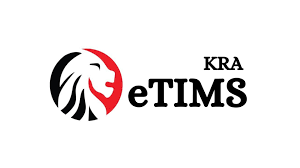In their pursuit to reduce non-performing loans, SACCOs have wielded almost unfettered powers in guarantors assets attachment. The ruling from the Cooperative Tribunal case 57 of 2021; Samuel Odhiambo Okope & 2 others (claimants) v Mwalimu National Savings & Credit Co-operative Society Limited & another (respondents), heralds a significant step on departure from this practise.
Securing a SACCO loan
SACCO Loans in Kenya are generally secured or collateralized by the borrower’s assets and in most occasions a borrower is required to bring in a third party (guarantor) who can stand or use his own assets (guarantor) to secure the loan facility.
The Claimants were guarantors to a loan issued to Charles Gwada Sudhe by the Mwalimu National SACCO. Charles defaulted on the loan amounting to Kshs.1,018,916.46 and the SACCO proceeded to attach the assets of the guarantors to recover the loan. The Claimants protested this action, but the SACCO was unbowed, the dispute was then brought before the tribunal.
The SACCO defended its action at the cooperative tribunal by offering the following reasons among others:
- That in guaranteeing repayment of the loan, the claimant’s accepted the liability to repay the loan upon default by the borrower which forms a separate agreement between the claimant and the SACCO.
- That the attachment of the Claimant’s assets was done in strict adherence to the law where the SACCO was exercising its right of recovery of the loan advanced to the borrower whom the Claimants guaranteed.
Matters for determination
There were two key issues for determination at the tribunal. The first issue was whether the guarantors had a duty towards the SACCO to repay the borrower’s loan on default and secondly whether the SACCO was right in attaching the guarantors assets upon default of the borrower’s loan. An ancillary matter also for determination was who carries the cost of the suit. We will focus our attention on the two key issues.
An important consideration on this matter is the contractual agreement between the guarantor and the SACCO and indeed the SACCO’s defence was anchored on contract law and more specifically on case law Fidelity Commercial Bank Limited – vs- Kenya Garage Vehicle Industries Limited [2017] eKLR. Where the court observed that:
Because a contract of guarantee is essentially a contract the following basic principles of contract law will apply. A contract of guarantee binds the person giving a guarantee to honour its terms irrespective of any dispute that may be existing between the parties to the transaction for which the guarantee was given. A guarantee is therefore an accessory contract by which the guarantor undertakes to be answerable to the provisions for the debt or default of another person whose primary liability to the promise must exist.
The issue of guarantee is then thrust into centre stage, what then is a guarantee? and are there limitations on its application? In examining this question, we must look at guarantee on two lenses. Is the guarantee provided to the SACCO by guarantors a pure form (perfect indemnity) or a conditional form (payment subject to specific events occurring?)
Defining a guarantee
A Guarantee is defined as an undertaking to answer for the payment or performance of another person’s debt or obligation, in the event of default by the person primarily responsible for it. A guarantee is a secondary obligation because it is contingent on the obligation of the borrower to the beneficiary of the guarantee (SACCO). On the other hand, an indemnity is a contractual promise to accept liability for another’s loss. It is a primary obligation because it is independent of the obligation of a borrower to the beneficiary of the indemnity (SACCO) under which the loss arose.
This definition did come into play in deciding this case, for example the claimants argued that that the SACCO by-laws explicitly stated that in the event of a default, the SACCO would take up the matter with the borrower through a tribunal mechanism and while the SACCO averred that this was a discretionary measure available to the SACCO and did not limit it’s powers to attach the guarantors assets, the tribunal agreed with the claimants that the SACCO needed to demonstrate that they had pursued all other avenues of collecting the debt (including using a tribunal) before attaching the guarantors assets.
Conclusion
In the end, the tribunal ruled in favour of the claimants on all the prayers. The lesson to be picked here is that SACCO management boards must relook their debt enforcement measures. Guarantees can no longer be treated as blanket indemnities; there is a burden placed on SACCOs to ensure that the principal debtor is pursued at his own personal level at length before effecting attachment measures on guarantors. Further, SACCOs will need to review their existing by-laws for any unnecessary burden that may be placed on the SACCO in pursuit of debt collection; this is an area where our consultants at FHC can assist on.














